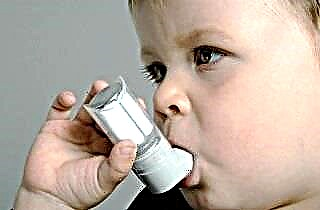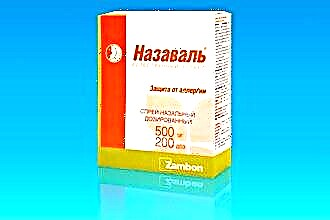Coughing is a natural process, the manifestation of which has a variety of reasons. The spasm provokes the release of foreign bodies and pathogenic microorganisms from the respiratory tract. However, there are cases when a child's cough without fever manifests itself in severe attacks, has a protracted nature, and causes unpleasant side effects. Forewarned means armed: we will learn to understand the nature of the phenomenon in question.
When the child is healthy
 It is well known that a child's cough without fever is physiological and pathological. To free the respiratory tract from dust, mucus and other unnecessary microparticles, a person must cough up 10-15 times a day. Don't worry when absent:
It is well known that a child's cough without fever is physiological and pathological. To free the respiratory tract from dust, mucus and other unnecessary microparticles, a person must cough up 10-15 times a day. Don't worry when absent:
- nausea;
- dizziness;
- vomit;
- suffocation;
- chest pain;
- high repetition rate of seizures;
- runny nose;
- tearing.
If the baby is cheerful, cheerful, eats well, behaves well, has a healthy sleep and does not have coughing fits, treatment is not required. Perhaps, it is simply necessary to carry out wet cleaning in the room more often so that the air temperature does not exceed 20 ᵒС, and the hygrometer indicator is 60-70%. It is with this regime that the mucus in the respiratory tract does not harden and leaves well.
Infants cramping
 Very small crumbs need to cough in order to remove milk from the respiratory tract if they choke on it. Also, babies can literally choke on their tears when they cry. This causes a reflex spasm. Children especially often have seizures when their teeth are teething. An excess of saliva in the mouth can be the cause of the disorder.
Very small crumbs need to cough in order to remove milk from the respiratory tract if they choke on it. Also, babies can literally choke on their tears when they cry. This causes a reflex spasm. Children especially often have seizures when their teeth are teething. An excess of saliva in the mouth can be the cause of the disorder.
These types of coughs are normal for babies. In addition, if you find any additional symptoms in the baby, it is forbidden to carry out treatment on your own. The baby needs to be shown to the pediatrician, who will prescribe effective therapy. The organism of the smallest patients is very susceptible to medications, therefore it is necessary to select and dose them as accurately as possible.
About doctor visits
 If your child has a cough with wheezing and frequent severe attacks or additional symptoms (runny nose), he certainly needs qualified help. Only a doctor, having established the clinical picture of the disease, will be able to prescribe a productive treatment.
If your child has a cough with wheezing and frequent severe attacks or additional symptoms (runny nose), he certainly needs qualified help. Only a doctor, having established the clinical picture of the disease, will be able to prescribe a productive treatment.
Pay attention to the frequency and duration of reflex spasms. If they are protracted, disrupt sleep and affect the general condition of the child, then this is evidence of pathology in the body. Children's cough, which passes without an increase in body temperature, sometimes leads to the development of chronic diseases, the manifestation of which is better prevented by timely therapy.
Reasons for violation
To diagnose what exactly caused a severe cough in a child, laboratory tests and examination by specialists will help. It is important to realize that dry cough in children, as a rule, is a signal of the presence of the disease that led to its occurrence. Therefore, you need to know the symptoms of such violations:
- Allergic reactions. Airway spasms can be caused by allergens. Especially often children under 9 years of age succumb to their influence, whose body reacts sharply to household, food and plant irritants. A violation can be recognized by the frequency or seasonality characteristic of an allergic cough.
 Bronchial asthma is a serious illness that can be completely asymptomatic. It manifests itself as a paroxysmal cough more often in the morning, lingering and dry, disturbing the sleep and rest of the child.
Bronchial asthma is a serious illness that can be completely asymptomatic. It manifests itself as a paroxysmal cough more often in the morning, lingering and dry, disturbing the sleep and rest of the child.- Infections of the upper and lower respiratory tract caused by fungi, bacteria and viruses may not always lead to an increase in body temperature. For example, infection with chlamydia or cytomegalovirus is accompanied exclusively by a cough. A wheezing spasm in a child signals the presence of whooping cough, parapertussis, or tuberculosis.
- Rhinitis, manifested not only by a cough, but also by a runny nose. Reflex airway spasm is caused by mucus that runs down the baby's throat. To alleviate the patient's condition, you need to treat the nose itself.
- Parasites. Respiratory tract damage is quite possible with helminth infection. Worm infestations are especially active in periods after 2 or 4 weeks, it is at this time that the patient begins to cough. How to treat this disorder is determined by the doctor. The therapy is for the whole family.
- Diseases of the gastrointestinal tract, in which the contents of the stomach are thrown into the esophagus, and from it enters the respiratory tract. It can be biliary dyskinesia or reflux.
Drug treatment
It is possible to successfully cure the disease that caused the spasm only with the help of complex therapy. At the same time, it is necessary to influence the elimination of symptoms and pathogens, to strengthen the immune system. For these purposes, special preparations are used, among which the following can be distinguished:
| Group | Names | Mechanism of action |
| Antitussives | Paxeladin, Omnitus, Sinekod, Codelac. | They act directly on the cough center, are prescribed only in rare cases, when there is no other choice, they have many side effects. |
| Antihistamines | Erius, Zyrtec, Suprastin. | They "lull" the action of substances in the body that react to allergens. |
| Expectorant | Bronchicum, Herbion, Prospan, Licorice Root. | Promote the excretion of phlegm, make coughing more productive, often available in the form of syrups. |
| Mucolytics | ACC, Flavamed, Ambrobene. | Thin mucus, making it thinner, which helps to cough up better. |
| Antibiotics | Sumamed, Amoxiclav, Amoxicillin. | They kill bacteria, cleansing the body of them; for each child, treatment is prescribed individually, since the drugs have side effects. |
| Bronchodilators | Berotek, Salbutamol, Ventolin. | They expand the lumen in the bronchi, facilitating the patient's condition, have a lot of side effects and contraindications, and are selected individually in each case. |
Inhalation
Inhalation helps to facilitate breathing with the described symptoms. For the procedure, you can use a special nebulizer. The device is equipped with a mask, it turns medicinal solutions or decoctions into microparticles and promotes their penetration into infected areas.
It is not recommended to use any medication for inhalation without consulting a doctor; you can only use alkaline mineral water.
 If there is no such device, you can use the old proven method of inhalation over steam. To do this, boil the potatoes in their skins and crush, wait until they cool slightly, and let the child breathe over the pan, covering his head with a thick towel or blanket.
If there is no such device, you can use the old proven method of inhalation over steam. To do this, boil the potatoes in their skins and crush, wait until they cool slightly, and let the child breathe over the pan, covering his head with a thick towel or blanket.
You can also use collections of various medicinal herbs, the following plants have proven to be excellent in the fight against cough:
- coltsfoot;
- marshmallow root;
- pine buds;
- melissa;
- dill and fennel fruits;
- thyme;
- lavender;
- calendula;
- viburnum and raspberry flowers, bushes, etc.
Rubbing
 Rubbing is one of the most effective cough remedies. If there is no fever, do not miss the opportunity to relieve the patient's condition by rubbing the chest (without affecting the nipples and heart area), back and feet. For this, the following natural remedies are suitable:
Rubbing is one of the most effective cough remedies. If there is no fever, do not miss the opportunity to relieve the patient's condition by rubbing the chest (without affecting the nipples and heart area), back and feet. For this, the following natural remedies are suitable:
- honey;
- butter;
- badger fat;
- bear fat;
- goose fat;
- beef fat.
Rub in natural ointments or pharmaceutical preparations with light massage movements until slight redness of the skin; to improve the warming effect, dress the patient in warm clothes, wrap him in a blanket.It is best to rub at night. For the treatment of young children, it is not recommended to use alcohol or alcohol infusions.
Folk remedies
Traditional medicine also has a considerable arsenal of recipes for eliminating cough. The products are prepared from environmentally friendly and fresh products, this is the only way to get the maximum benefit from them. Consider what mixtures are used to treat cough.
 Honey and milk. Dissolve a tablespoon of honey in a glass of warm boiled milk. You can also add a lump of butter (20 g) or baking soda. You need to drink such a "cocktail" 3 times a day, if there are no contraindications. It softens the mucous membranes, envelops them, has a mucolytic and antitussive effect.
Honey and milk. Dissolve a tablespoon of honey in a glass of warm boiled milk. You can also add a lump of butter (20 g) or baking soda. You need to drink such a "cocktail" 3 times a day, if there are no contraindications. It softens the mucous membranes, envelops them, has a mucolytic and antitussive effect.- Radish juice that works on almost any type of cough. You need to take a large radish, rinse it thoroughly, cut off the top. Make a depression in the pulp with a teaspoon and add honey there. The beekeeping product should not occupy the entire hollow, leave room for the juice that will stand out from the root crop. In order for the components to react, you need to cover the "barrel" of the radish with the top, which we cut off beforehand, and leave to infuse for 12 hours. You need to drink 1 teaspoon of the resulting mixture 3 times a day.
- Onion syrup. Onions are rich in phytoncides - substances useful for eliminating coughs, therefore it is widely used in traditional medicine. Take 1 large onion, chop it with a knife or in a blender, mix with granulated sugar (2 tablespoons). We insist without a refrigerator during the night, ready-made syrup for children is recommended for 1 / 3-1 teaspoon, depending on age, every 2 hours.
Be careful
 In order not to harm the health of the child, the doctor sets the dosage and the regimen for taking any other therapy for a cough that is not accompanied by fever.
In order not to harm the health of the child, the doctor sets the dosage and the regimen for taking any other therapy for a cough that is not accompanied by fever.
This also applies to medications and folk remedies. It should be remembered about the danger of prolonged use of plant components and animal fats for the health of the child. Even natural decoctions and potions can provoke a negative reaction, because the baby may be allergic to plant and animal raw materials.
Be careful with ingredients such as honey, milk, and alkaline mineral water. They can be completely contraindicated in case of personal intolerance and some diseases.
Let's summarize
A spasm of the airways that occurs without an increase in body temperature may be a normal reaction of the child's body to external stimuli or signal that a serious illness is present. Treatment will be effective only if you follow the above recommendations and respect your health. Closely monitor the condition of the baby, visit the pediatrician on time and be treated with safe means.

 Bronchial asthma is a serious illness that can be completely asymptomatic. It manifests itself as a paroxysmal cough more often in the morning, lingering and dry, disturbing the sleep and rest of the child.
Bronchial asthma is a serious illness that can be completely asymptomatic. It manifests itself as a paroxysmal cough more often in the morning, lingering and dry, disturbing the sleep and rest of the child. Honey and milk. Dissolve a tablespoon of honey in a glass of warm boiled milk. You can also add a lump of butter (20 g) or baking soda. You need to drink such a "cocktail" 3 times a day, if there are no contraindications. It softens the mucous membranes, envelops them, has a mucolytic and antitussive effect.
Honey and milk. Dissolve a tablespoon of honey in a glass of warm boiled milk. You can also add a lump of butter (20 g) or baking soda. You need to drink such a "cocktail" 3 times a day, if there are no contraindications. It softens the mucous membranes, envelops them, has a mucolytic and antitussive effect.

